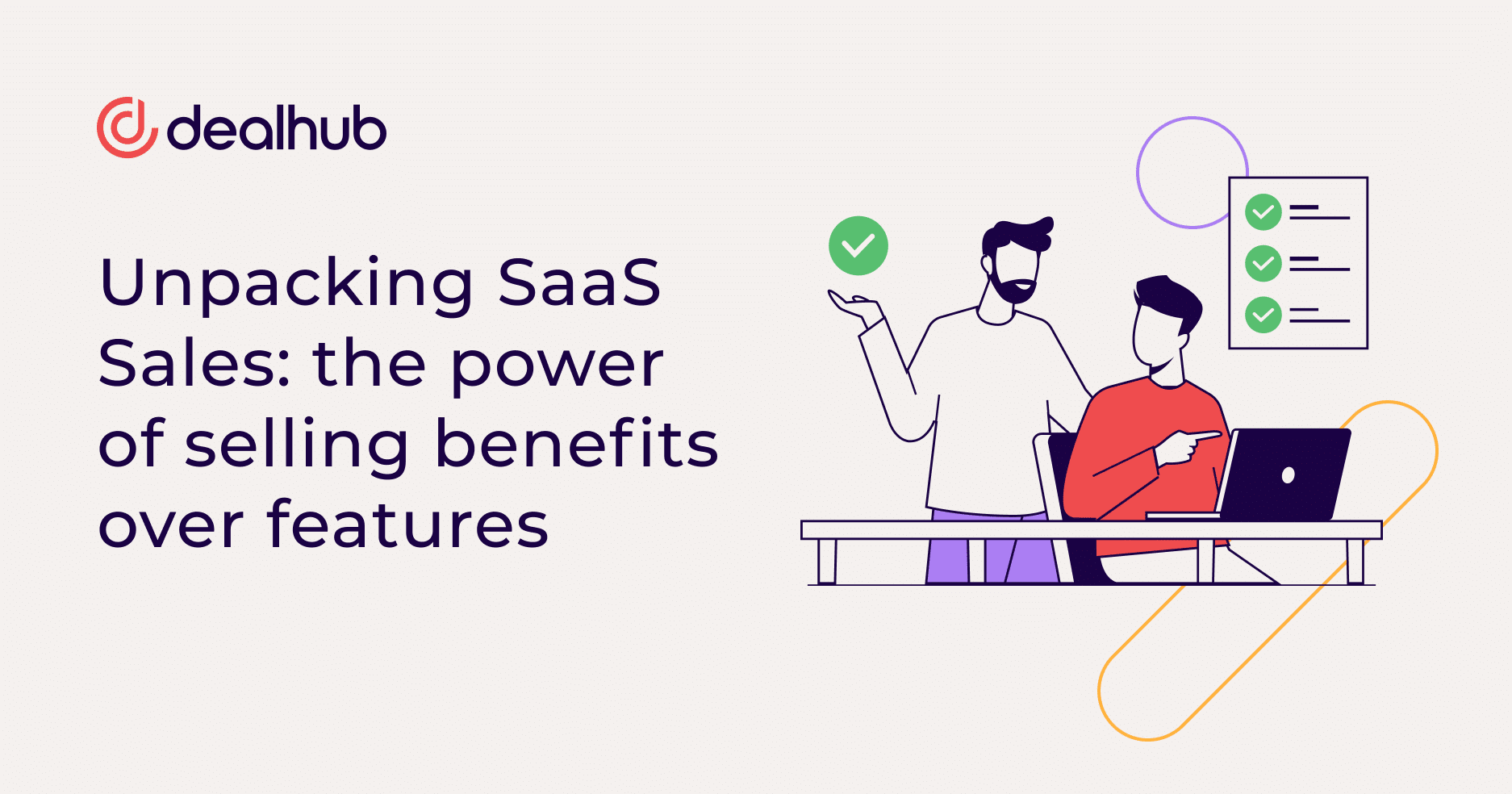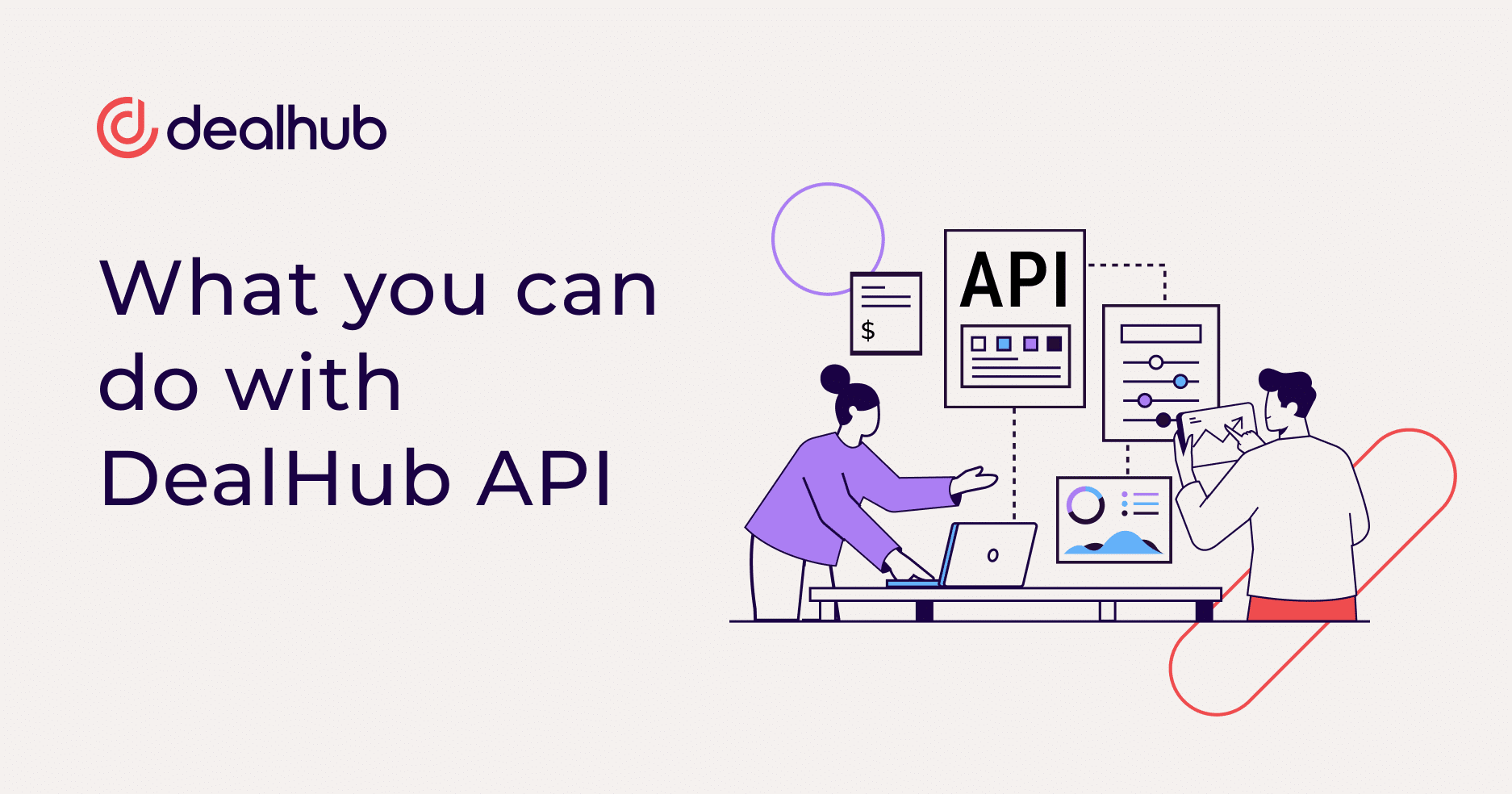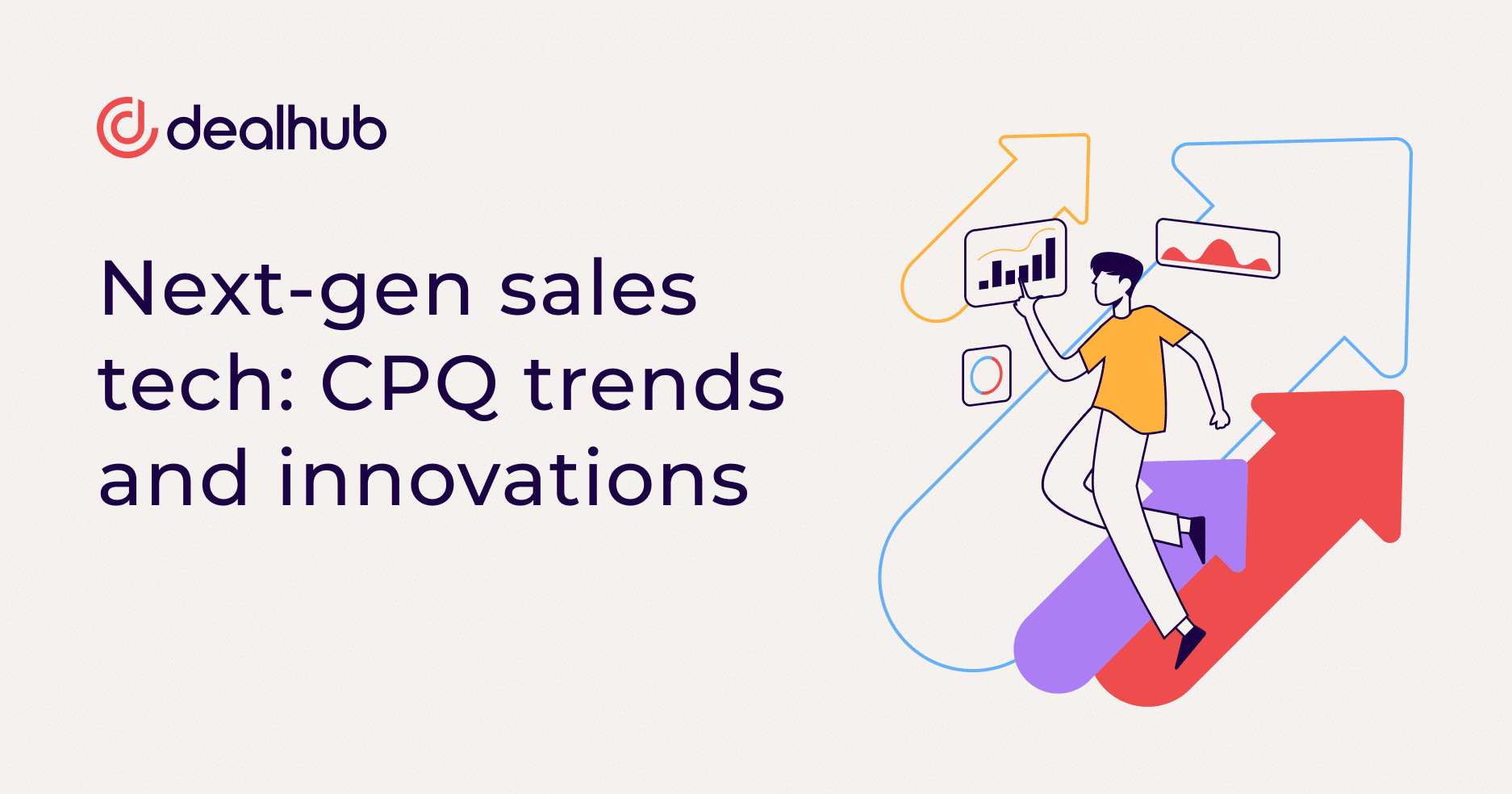At DealHub, our sales team knows a thing or two about selling software solutions that cater to customer needs. So today, we’re sharing their expertise and best practices for SaaS sales. Come with us as we explain why focusing on the tangible benefits over technical features can be a game-changer in your sales approach. We’ll showcase the difference between selling features and showcasing benefits and why a value-based sales framework enables sales teams to create deeper connections with buyers to close complex SaaS deals.
The complexity of SaaS sales
When it comes to SaaS sales, complexity is the name of the game. Selling software as a service isn’t like selling your everyday gadgets; it’s an intricate balance of introducing technology, exploring customer needs, and weaving in the art of persuasion.

Think of it this way: your potential customers aren’t just looking for a tool; they’re seeking solutions to their specific problems. These problems vary widely, from improving operational efficiency to enhancing customer experiences. The sheer diversity of these issues creates a tangled web of intricacies that sales teams must navigate. A cookie-cutter approach just won’t do when you’re dealing with clients that have such disparate needs. Therefore, you must put each individual at the center of the buying experience.
Customer-centric selling
Selling SaaS products isn’t about convincing customers that they need your software. It’s about understanding their pain points and needs and showing them how your software is the perfect solution. This is where a customer-centric approach comes into play.
In solution selling, the customer – not the product – takes center stage. Your sales conversations should involve understanding clients’ challenges, desires, and aspirations. Working off of these insights, sales representatives can begin to find a solution to fit their unique requirements. Only by putting the customer at the forefront can you effectively tailor your pitch and convince them that your SaaS solution is exactly what they need.
Meeting customer needs through benefits
To truly grasp the importance of benefits over features, we need to differentiate between the two. While features describe what your software can do, benefits tap into the ‘why’ and resonate with customers’ emotions and needs.

Features vs. benefits
Imagine you’re shopping for a new car. The salesperson lists the car’s impressive horsepower, fuel efficiency, and all-wheel drive. These are features. But what truly seals the deal for you is when they explain that the car’s power will give you a thrilling driving experience, the fuel efficiency will save you money on long road trips, and the all-wheel drive will keep your family safe in any weather. These are benefits, and they connect with your desires and concerns.
When selling SaaS, a company may offer valuable features such as “real-time analytics” or “automated workflows.” But what customers really want are benefits like “actionable insights at your fingertips” and “streamlined operations for increased efficiency.” Benefits appeal to the customer’s aspirations and emotional triggers – and are much more powerful buying signals.
Why people buy
When a potential customer is on the fence about purchasing your SaaS solution, there are a few subconscious factors at play:
- They’re considering the ROI (Return on Investment). Will your software save them time, money, or resources?
- They’re thinking about FOMO (Fear of Missing Out). What if your competitor gains an edge and the customer gets left behind?
- They need trust. Can they trust that your software will deliver on its promises?
By focusing on the benefits, as opposed to the features, you can get closer to the “why” driving the decision behind the purchase. Here’s how, psychologically, benefits resonate with customers more than features:
They build an emotional connection. Benefits tap into the customer’s emotions and desires. They answer the question, “What’s in it for me?” Features, on the other hand, are often technical and fail to create an emotional connection.
They see relevance in the product or service. Benefits are highly relevant because they address the customer’s pain points and aspirations. Features, without context, can feel like a laundry list of capabilities that may or may not be relevant to the customer.
They solve a problem. Benefits directly communicate how your product or service can solve problems. Features may require customers to connect the dots themselves, which can be a barrier to buying decisions.
There’s differentiation in the offering. Benefits are what set your product or service apart from the competition. They showcase why your offering is unique and the best choice for the customer.
There’s a clear perception of value. Benefits ensure customers understand the value they will gain from your product or service. This is crucial in justifying the cost and making the purchase decision easier.
There’s a compelling story. Benefits lend themselves to storytelling. Sharing success stories and case studies that highlight the benefits your product brings to customers can be far more persuasive than just listing technical specifications.
Crafting your benefit-led pitch
Now, let’s get practical. How can you transform your software’s features into compelling benefits that captivate potential clients? We’ve got a powerful tool for you: the SPICED framework.
The SPICED framework is a methodology that enables sales representatives to identify customer needs and optimize opportunities.
SPICED stands for:
Situation: Begin by understanding the customer’s current situation. What challenges are they facing? What are their goals?
Pain: Delve into their pain points. What’s causing them frustration, inefficiency, or loss of revenue?
Impact: Paint a vivid picture of how your software can relieve their pain. What changes can they expect, and how will it transform their business?
Critical Event: Highlight the turning point. Describe a specific moment where your software becomes the hero, solving a crucial problem.
Decision: Conclude by guiding them towards the logical decision of choosing your SaaS solution as the ultimate problem solver.
This methodology ensures sellers systematically organize information to understand customer needs and anticipate objections.
Imagine you’re selling project management software. You start by understanding that your potential customer is drowning in chaos, missed deadlines, and unhappy clients (Situation). Their team’s productivity is plummeting, and they risk losing essential projects (Pain). Now, you show them how your software will ensure they regain control, keep projects on track, and ultimately win more business (Impact). You share a story of a client who, thanks to your software, successfully turned a troubled project into a shining success (Critical Event). And finally, you invite them to make the wise decision to choose your software to transform their project management (Decision). That’s the SPICED framework!
Keep in mind that the SPICED framework is more of a guide than a rigid structure. As Alan Alan Wright, VP of Strategy and Operations at Rocket.Chat, points out in DealHub’s RevAmp podcast, The SPICED Sales Methodology for GTM Sales, the framework is rarely followed in a linear fashion in SaaS sales. It’s critical to meet the customer where they are to be able to qualify the deal and establish pain and impact at the outset.
Keeping it real
Since SaaS sales is an environment that is constantly evolving, a feedback loop is essential. Your customers’ insights are a goldmine for refining and emphasizing the most impactful benefits of your software.
Current customers have real-world experience with your software and can provide invaluable feedback on how it has solved their problems, exceeded their expectations, or even led to unexpected benefits they hadn’t considered. Use their testimonials and case studies to illustrate the real impact of your SaaS solution. A great example of this is DealHub’s Customer page, showcasing pertinent stories and endorsements from clients.
Enabling your sales team to sell benefits
Once you commit to selling benefits over features, you must also equip your sales team with the right tools. This is where CPQ (Configure, Price, Quote) software and DealRoom come into play.
CPQ software streamlines the sales process, making it easier for your team to understand the customer’s unique needs and tailor their pitch accordingly. DealRoom, on the other hand, is a robust platform that enables your sales team to manage complex SaaS deals efficiently. It provides a collaborative space where your team and customers can come together, share information, and close deals faster.
By integrating feedback and leveraging sales tools alongside other technology like CRM software, you’ll be enabling your team to understand each prospect on a personal level for a truly customer-centric experience built into every interaction.
At the end of the day, the secret to success lies in promoting benefits, not just features. By understanding the complexity of the SaaS landscape and meeting customer needs through the lens of benefits, you can tap into the psychological triggers that drive purchase decisions.
Use the SPICED framework to craft benefit-led pitches that resonate with your potential clients and keep a feedback loop with your current customers to refine your message. And don’t forget to equip your sales team with the right tools, like CPQ software and DealRoom, to streamline the process! Remember, in SaaS sales, it’s not about what your software can do; it’s about how it can transform your customers’ businesses and lives.





